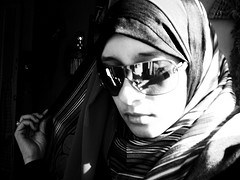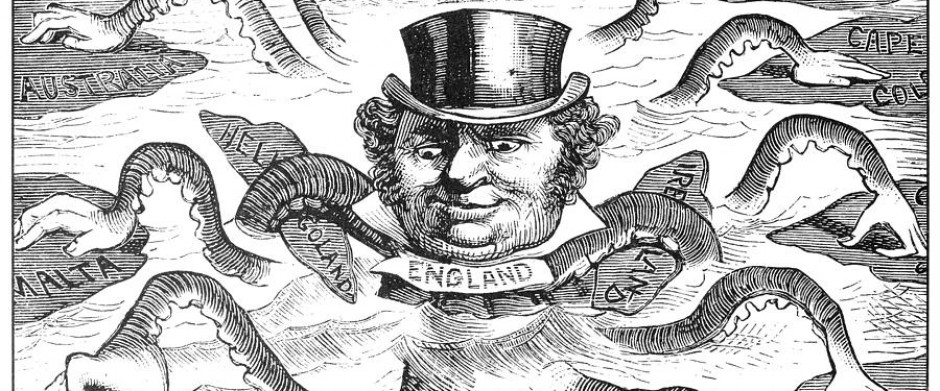Iran, one of the most powerful Islamic countries in the world, is highly affected by Western domination. It influences people’s daily life, their culture’s customs, and people’s ways of thinking; Majeed describes it as modernization (2004). I lacked knowledge about Iran until I did the research for this post, and one thing that interested me as I was reading was the way in which Iranian women were interacting uniquely with modernity, in terms of Western ideologies. From the resources I have read, I strongly believe that internal connections people have with God are more important than blindly following the rules that Iranian people are struggling with.
First of all, we need to give a definition of modernity, and explain how Iranian females interacted with it at the start of the revolution. As John Wilson states, “It is much more helpful to use it in a pre-reified or no-reified way as a means of recognizing that cultural change and awareness of that change are pervasive in contemporary societies” (2005: p132). Modernity involves with culture changes, and people’s consciousness about this change is significant. When the Iranian revolution started, the lives of Iranian people were totally changed. Those changed laws especially affected Iranian women, who were always the social minority group in Iran, and had to start to wear hijabs in public, and along with many other rigid religious rules (Kamran Talattof 2011, 95).
In the movie Persepolis (2007), Marjane Satrapi showed audiences how Iranian women reacted negatively to that change. In the beginning of the movie, the fictionalized Marjane herself fights against wearing a hijab, and her grandmother speaks of the days when she was young and did not have to veil. This particular scenario was not only fictional, but she was also projecting the relationship Iranian women had with modernity by showing her personal experiences. However, some people might question the authenticity of the movie. When Marjane responded in the interview with Robert L. Root, she said she did not use the same names and exact things from real life in the movie. Still, we need to be highly aware of what she was trying to present to her audiences (2004).
Similarly and currently, another American-Iranian woman Masih Alinejad started the movement called “My Stealthy Freedom”, which was about making the individual choices about veiling. Masih was confused with her identity because of all the religious rules she needs to obey and along with the American cultures she experienced. Masih believed that she was a truly Muslim woman, so the decision on whether to veil or not to veil should be her personal choice, because to her, a personal, internal connection with God is more important than following rigid rules. Therefore, by posting pictures of herself unveiled, Masih started the trend of not veiling in Iran, especially (2014).
Some scenarios from Persepolis have direct relationships with this social movement as well. For instance, when Marjane first returned from Europe, she took off her hijab while she was driving. I think the reason why Marjane took this risk was not only because of her personality, but also because she had experienced Western customs when she studied abroad. She knew the feeling of freedom, and she wanted to bring this freedom back to her home country. I found this really interesting, because Iranian women have the desires of freedom, but due to the social construction in Iran, they have to obey those rules. However, from the examples of Marjane and Masih, it is not hard to see their internal connections with God are more important than passively following religious rules.
Additionally, we see proof of this from other interviews and articles about Islamic women, who are the minority groups in their communities, yet still bravely speak out for themselves. For example, the young woman whose picture is in blow, is one of the interviewees from Dubai, and has to veil based on the rule, but she fights back with a desire to make her own choice about veiling (Panetta, Claire, 2011).
 It’s easy to tell that most Iranian women want to gain their social rights, as well as religious rights. Since the Iranian Revolution, the whole country has been indirectly shaped by Western domination; Iranian women showed their unique ways of handling modernity, as the group who fights against “traditional” religious rules, which are part of the side-effects of modernity. Marjane, Masih, and those Iranian immigration movement activists are the most powerful examples for us. To think of Iran in modernity, it doesn’t have to change completely, but find the right spot for themselves as contributing to modernity. And I really like the brave female Iranian leaders who have spoken out, and inspire others who find themselves in similar dilemmas, as they have also showed us their uniqueness!
It’s easy to tell that most Iranian women want to gain their social rights, as well as religious rights. Since the Iranian Revolution, the whole country has been indirectly shaped by Western domination; Iranian women showed their unique ways of handling modernity, as the group who fights against “traditional” religious rules, which are part of the side-effects of modernity. Marjane, Masih, and those Iranian immigration movement activists are the most powerful examples for us. To think of Iran in modernity, it doesn’t have to change completely, but find the right spot for themselves as contributing to modernity. And I really like the brave female Iranian leaders who have spoken out, and inspire others who find themselves in similar dilemmas, as they have also showed us their uniqueness!
Bibliography
“My Stealthy Freedom.” My Stealthy Freedom. May 3, 2014. Accessed November 3, 2015. http://mystealthyfreedom.net/en/
Javed Majeed, “Modernity,” Encyclopedia of Islam and the Muslim World. Ed. Richard C. Martin. Vol. 2. New York: Macmillan Reference USA, 2004. 456-458. Gale Virtual Reference Library.
John F Wilson, “Modernity,” Encyclopedia of Religion. Ed. Lindsay Jones. 2nd ed. Vol. 9. Detroit: Macmillan Reference USA, 2005. 6108-6112. Gale Virtual Reference Library.
Talattof, Kamran. ““Seduction, Sin, and Salvation”.” In Modernity, Sexuality, and Ideology in Iran the Life and Legacy of a Popular Female Artist. Syracuse, N.Y.: Syracuse University Press, 2011.
Panetta, Claire. “Documentary: (Un)veiled: Muslim Women Talk About Hijab.” Wnn Interviews Global. N.p., 07 July 2011. Web. 01 Oct. 2015.
Persepolis. Dir. Marjane Satrapi. Sony Pictures Home Entertainment, 2008. DVD.
